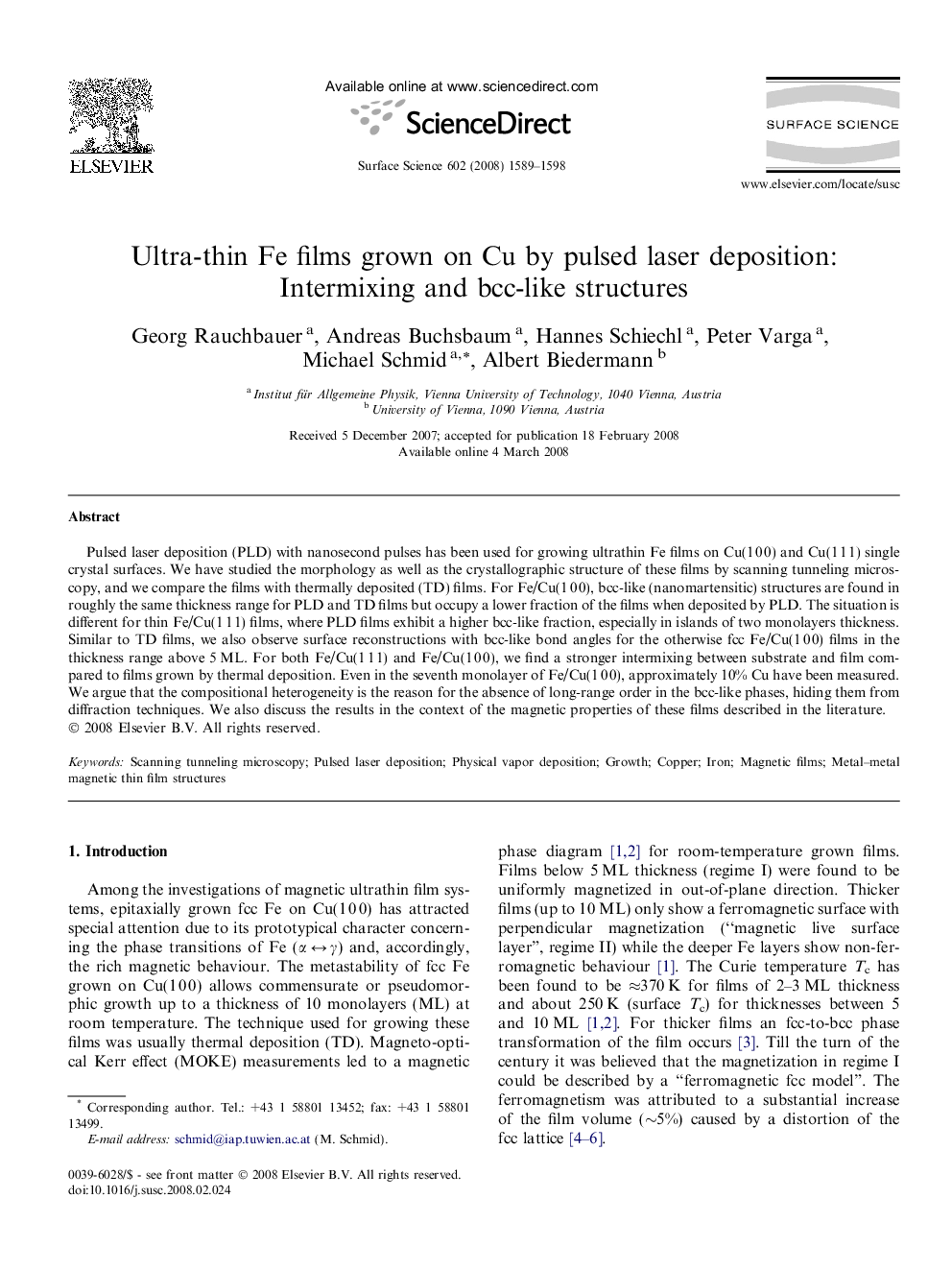| Article ID | Journal | Published Year | Pages | File Type |
|---|---|---|---|---|
| 5424838 | Surface Science | 2008 | 10 Pages |
Abstract
Pulsed laser deposition (PLD) with nanosecond pulses has been used for growing ultrathin Fe films on Cu(1Â 0Â 0) and Cu(1Â 1Â 1) single crystal surfaces. We have studied the morphology as well as the crystallographic structure of these films by scanning tunneling microscopy, and we compare the films with thermally deposited (TD) films. For Fe/Cu(1Â 0Â 0), bcc-like (nanomartensitic) structures are found in roughly the same thickness range for PLD and TD films but occupy a lower fraction of the films when deposited by PLD. The situation is different for thin Fe/Cu(1Â 1Â 1) films, where PLD films exhibit a higher bcc-like fraction, especially in islands of two monolayers thickness. Similar to TD films, we also observe surface reconstructions with bcc-like bond angles for the otherwise fcc Fe/Cu(1Â 0Â 0) films in the thickness range above 5Â ML. For both Fe/Cu(1Â 1Â 1) and Fe/Cu(1Â 0Â 0), we find a stronger intermixing between substrate and film compared to films grown by thermal deposition. Even in the seventh monolayer of Fe/Cu(1Â 0Â 0), approximately 10% Cu have been measured. We argue that the compositional heterogeneity is the reason for the absence of long-range order in the bcc-like phases, hiding them from diffraction techniques. We also discuss the results in the context of the magnetic properties of these films described in the literature.
Keywords
Related Topics
Physical Sciences and Engineering
Chemistry
Physical and Theoretical Chemistry
Authors
Georg Rauchbauer, Andreas Buchsbaum, Hannes Schiechl, Peter Varga, Michael Schmid, Albert Biedermann,
